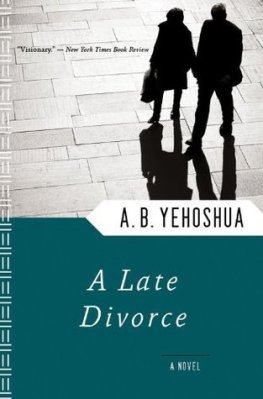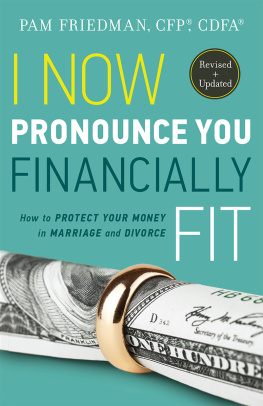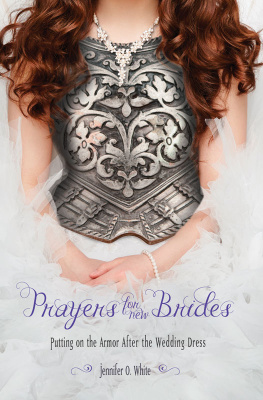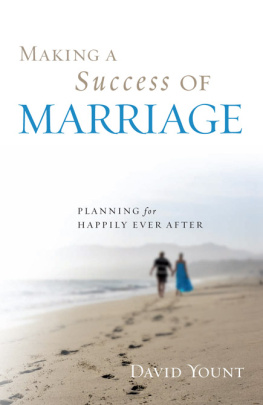Rewriting My Happily Ever After
A Memoir of Divorce and Discovery
Dr. Ranjani Rao
Rewriting My Happily Ever After Dr. Ranjani Rao 2021
All rights reserved. No part of this publication may be reproduced, stored in a retrieval system, or transmitted in any form or by any means, electronic, mechanical, photocopying, recording or otherwise, without the prior written permission of the author. The only exception is brief quotations in printed reviews.
Dr. Ranjani Rao asserts the moral right to be identified as the author of this work .
Rewriting My Happily Ever After is a work of nonfiction. Some names and identifying details have been changed. The chapter Incorporating Rituals first appeared as an essay titled The Gentle Art of Lighting A Lamp in Leaping Clear (September 2020).
E-ISBN - 978-1-7340631-8-9
P-ISBN - 978-1-7340631-9-6
Book cover design by Angelia Gan.
Book layout by Subramanian Ganga Devi.
For information, contact the author at
www.ranjanirao.com
Published by Story Artisan Press
www.storyartisan.com
C onnect with me by signing up for my newsletter at www.ranjanirao.com for latest updates, offers and for a biweekly dose of inspiration for Rewriting Your Happily Ever After!
To Amma and Dada
You must understand the whole of life, not just one part of it. That is why you must read, that is why you must look at the skies, why you must sing, dance and write poems, and suffer, and understand, for all that is life.
~J. Krishnamurti
Preface
T elling the story of my divorce, of breaking the bonds of a long marriage that produced one child, is not easy.
Divorce is not unusual. The statistics, although evolving, are unequivocal. Ive read that in the United States between forty and fifty percent of marriages end in divorce.
In India, the numbers are not so clear, partly because of poor record keeping but mostly because no one wants to talk about divorce, much less track it. Whether we measure it or refuse to admit it, the fact remains that divorce is becoming increasingly common. It is as much a part of our life as birth and death.
After sixteen years of marriage, I walked out of the home I shared with my husband with no idea what lay aheadfor me, my daughter, and our place in society. When I abandoned the script for my life that had been written for me, I was forced to forge a new path paved only with my own decisions.
I did not know anyone else in my inner circle who was divorced. There was no role model for me to emulate, no road map of how to tread on this new path. For the three years that followed my departure, I was lonely, scared, and full of doubts.
Was I the first to feel this way? Was I the only one who had experienced the grief and struggle that accompanies the dissolution of a long marriage? Though I asked these questions, I knew that I was neither the first nor the only one to experience divorce. Why then did I feel so lost?
I grew up in Mumbai and was raised in a family that valued education. I was bold, outspoken, and believed in gender equality. I completed my PhD on a scholarship, held a job for my entire adult life, and had lived abroad. Yet I stayed in my unhappy marriage for many years. Why?
For the same reasons that many Indian women do.
I did not have answers to the dreaded questions: What will people say? What will the parents say? What about the child(ren)? How will I manage alone?
I wrote this book to describe my process to figure out the answers to these questions as a way to help women who, like me, may find themselves hesitating on the brink of a decision about their marriage. To my surprise, through the catharsis and clarity that arises from writing, I found closure.
Throughout the book, I describe the tools and practices that shaped my life at a time when I was raw with hurt and disappointedboth at the world and myself.
Your story may be different, your route to getting to the point where you picked up this book may be more treacherous or less, but if you ever felt the need to know that you are not alone, this book is for you.
I fully believe that you too will be able to figure things out, find help from unexpected people, and most importantly, discover a reservoir of strength from the one source that you may not have consideredwithin yourself.
It is possible to walk the path we have been assigned with gratitude and forgiveness, courage and grace, humility and confidence, without falling apart.
I invite you to read this book and rewrite your happily ever after. Always remember this:
It is never too late - in fiction or in life - to revise ~ Nancy Thayer
Prologue
We know what we are but know not what we may be
~ William Shakespeare
T he flyer on the notice board outside the gym caught my eye, not just for the pale blue background with its striking orange text, but for the title:
So, youre thinking about divorce? Had someone overheard my thoughts and created this poster?
The title was intriguing, specific about the subject but vague about the product. Was it a book? Or a seminar? Although eager to get back to the office after my lunchtime aerobics class, I stopped to read further.
It was a six-week workshop beginning the following week for people unsure about whether they wanted a divorce, and it was covered by our employee assistance program. When I returned to my desk that afternoon, I called and registered.
I was the ideal candidate. The workshop title perfectly reflected my ambivalence about divorce. On the surface, we were a successful Indian couple living in the San Francisco Bay areadual income, one kid.
We had managed to stay married for over a decade, although it had been a long time since either of us could call it a happy marriage. It wasnt even peaceful, but it was what we had.
We had both accepted the unwritten rule of arranged marriage: love, if it arrived at all, would bloom with time.
Wasnt a decade long enough to wait for love to bloom? I wondered on the drive back home. Especially on days like this when I returned from work, dreading the hours I had to spend with a husband who was more of an annoying roommate than supportive spouse, yet looking forward to spending time with our small child whom we both loved.
Once you have a baby, everything will be fine.
I had heard that refrain enough times from relatives, friends, and strangers who believed that the purpose of marriage was procreation and that the objective of a childs life was to hold on to each parent and keep them together through a combination of guilt, love, duty, and fear.
Was a child enough of a glue to hold us together? She had arrived after much struggle and intervention, on both medical and spiritual fronts.
After we became parents, almost eight years after becoming husband and wife, things were differentfor a while. We entered into a prolonged period of ceasefire during which we parked our frustrations behind the mountain of attention needed by our newborn daughter. Yet as she grew from infancy to toddlerhood and into a happy preschooler, my doubts continued to increase.
Shouldnt there be more to a marriage? A clarity of purpose? A unity of vision? Team spirit? Common goals? A mutual love of things and each other? We didnt seem to have any of these. In the three short weeks between our first meeting and weddingtypical of such weddings between an expat Indian boy and an India-based girlhad I missed a memo about how to make an arranged marriage work?
I hoped the workshop would help me clarify my thoughts about what I wanted from a marriage, if not an outright divorce.
***
At 6 p.m. on the f ollowing Wednesday, I joined a motley group of people in a small clinic in downtown Palo Alto. Eight people sat in chairs arranged in a circletwo couples, three women, and Linda, the facilitator, a middle-aged woman with short silver hair and bright red lipstick.
Next page








